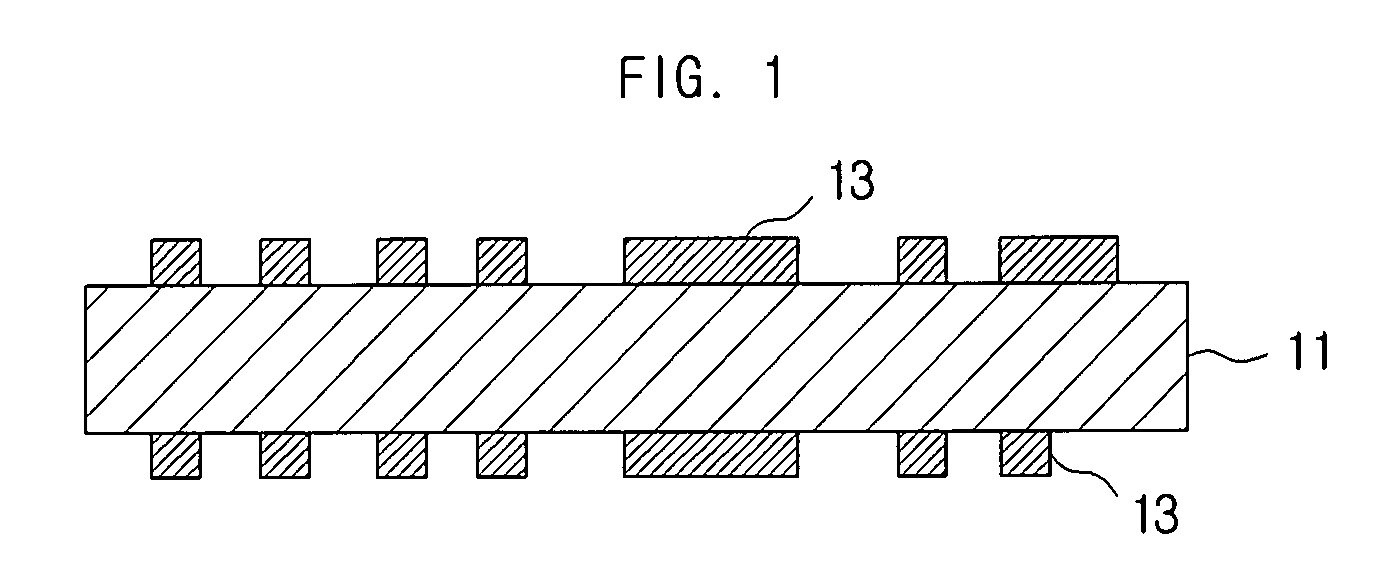Fabricating method for printed circuit board
a printed circuit board and fabrication method technology, applied in the direction of resist details, conductive pattern formation, electric connection formation of printed elements, etc., can solve the problems of defective entire board, general cost of molds, and only the bottom surface of the insulation layer of the circui
- Summary
- Abstract
- Description
- Claims
- Application Information
AI Technical Summary
Benefits of technology
Problems solved by technology
Method used
Image
Examples
Embodiment Construction
The method of fabricating a printed circuit board according to certain embodiments of the invention will be described below in more detail with reference to the accompanying drawings, in which those components are rendered the same reference numeral that are the same or are in correspondence, regardless of the figure number, and redundant explanations are omitted.
FIG. 1 is a cross-sectional view illustrating a core layer used in a method of fabricating a printed circuit board according to an embodiment of the invention.
Referring to FIG. 1, an inner circuit 13 may be formed on either side of a core layer 11. While there are inner circuits 13 formed on both sides of the core layer 11 in FIG. 1, in some cases there may be just one inner circuit formed only on one side. Because the inner circuit 13 may be embedded between insulation layers in a subsequent process, there may be no undercuts as occurring in conventional fine-line circuits. The inner circuit 13 may be electrically connecte...
PUM
| Property | Measurement | Unit |
|---|---|---|
| temperature | aaaaa | aaaaa |
| temperature | aaaaa | aaaaa |
| electrically | aaaaa | aaaaa |
Abstract
Description
Claims
Application Information
 Login to View More
Login to View More - R&D
- Intellectual Property
- Life Sciences
- Materials
- Tech Scout
- Unparalleled Data Quality
- Higher Quality Content
- 60% Fewer Hallucinations
Browse by: Latest US Patents, China's latest patents, Technical Efficacy Thesaurus, Application Domain, Technology Topic, Popular Technical Reports.
© 2025 PatSnap. All rights reserved.Legal|Privacy policy|Modern Slavery Act Transparency Statement|Sitemap|About US| Contact US: help@patsnap.com



